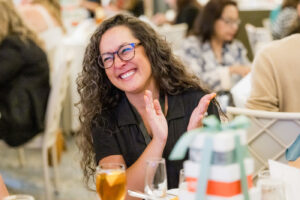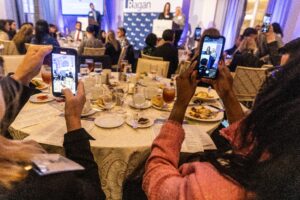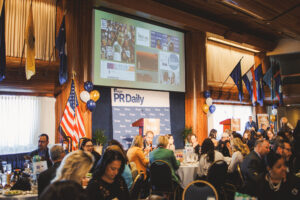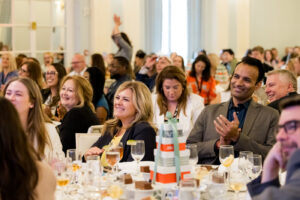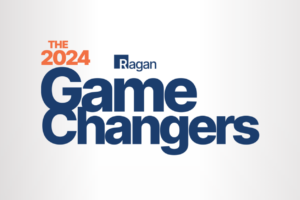Creative ways to make a difference: Lessons from Ragan’s CSR and Diversity Award Winners
A closer view into some innovative campaigns.

In today’s workplace, it’s not enough to just do business — in many cases, organizations need to show that they’ve got a tangible commitment to corporate social responsibility and a workplace that’s as diverse as its audiences. Sometimes organizations come up with a campaign so creative and impactful, it’s hard not to take note.
We’ve highlighted some of the first-place winners from last year’s Ragan PR Daily CSR & Diversity Awards to take a closer look at their strategies and successes. Be sure to apply to this year’s awards before submissions close on April 19.
Best PR Campaign: Mars Food — Ben’s Original Commitment to Purpose and Inclusive Opportunities
The situation: Within their Ben’s Original rice brand (formerly Uncle Ben’s), Mars Food wanted to find a way to offer everyone a seat at the metaphorical table. For the brand, this meant focusing on including underserved communities as a part of its outreach group.
The solution: To better illustrate its commitment to diversity, Mars created a diversity-focused scholarship program, along with a PR campaign that celebrated both diversity and called attention to food access across the country.
The Seat at the Table Scholarship worked with the United Negro College Fund and the National Urban League to support the academic goals of students of color that aimed to break into food-based industries. The $ 25,000-a-year scholarship went to 27 deserving students in its first two years.
In addition, the Be an After School Hero campaign worked with No Kid Hungry to help provide over 2.5 million meals to needy kids across America. This campaign earned over 600 media placements and more than a billion impressions across all media.
The takeaway: Sometimes a familiar brand can do extraordinary things with fresh thinking.
Best Media Relations Campaign: Genentech — Reclaiming the Double Take to Challenge Disability Stereotypes
The situation: More than a quarter of Americans live with some sort of disability. But despite pushes for more diversity in the fashion industry, many people still find it difficult to find clothing that’s both accessible and expressive of their personalities.
The solution: To help change that, Genentech and the spinal muscular atrophy (SMA) community launched Double Take. A fashion show with SMA community involvement that aimed to conquer disability stereotypes and champion adaptive design through the company’s SMA My Way program, Double Take showed the fashion industry that there’s a place for accessible and stylish clothing.
Alongside the fashion show, Genentech also launched a PR campaign to share participant’s stories with a wider audience.
The Double Take show took place in front of a crowd of 200+ people as a prelude to New York Fashion Week. The show earned 13 on-site interviews and was streamed to nearly a quarter million people.
Genentech also worked with Double Take participants to create an extensive pre-show social media campaign involving 25+ unique videos shared across social platforms. Personal content from the SMA community, including closet tours and vlogs, offered a closer look into their struggles with clothing and shared the once-in-a-lifetime experience of participating in a New York Fashion Week event.
The takeaway: Sometimes visualizing a need can make an issue feel less niche and help get your message across.
Best Social Media Campaign: T-Mobile — Game of Phones
The situation: Around the holidays, T-Mobile tries to give its customers a cool experience while also giving back to the community. Game of Phones, the telecom provider’s 2022 holiday campaign, used the metaverse and augmented reality by showcasing T-Mobile’s 5G capabilities and technology while also educating audiences on the company’s corporate social responsibility work.
The solution: Holographic versions of 17 executives from T-Mobile’s leadership team asked a mix of trivia questions and shared facts about T-Mobile. Each correct answer earned a player a token. Players navigated inside the organization’s Bellevue, WA campus, touring where employees work and connect with one another.
As players moved through the corporate campus, T-Mobile leaders’ holograms appeared. Each asked a trivia question to the contestants. If they answered correctly, the player received a token before moving forward. Players that earned all 17 tokens were entered into a prize drawing. Players that finished the game were also given the choice of where T-Mobile donated money to — Big Brothers Big Sisters of America, National Urban League, or Conservation International.
The “Game of Phones” campaign saw over 400,000 people complete the game — an 8,700% increase over the company’s 2021 holiday campaign. Additionally, the game earned nearly 4 million engagements across all social media channels.
The takeaway: Using emerging tech to give people cutting-edge experiences can help garner positive press and generate buzz that drives higher engagement.
Sean Devlin is an editor at Ragan Communications. In his spare time he enjoys Philly sports and hosting trivia.


